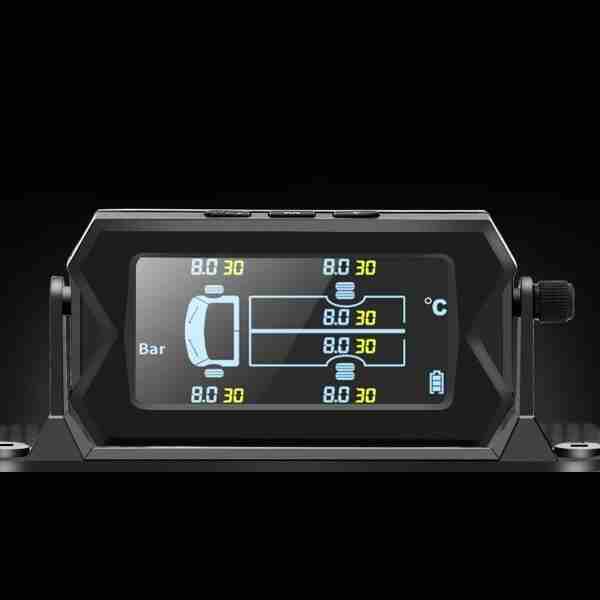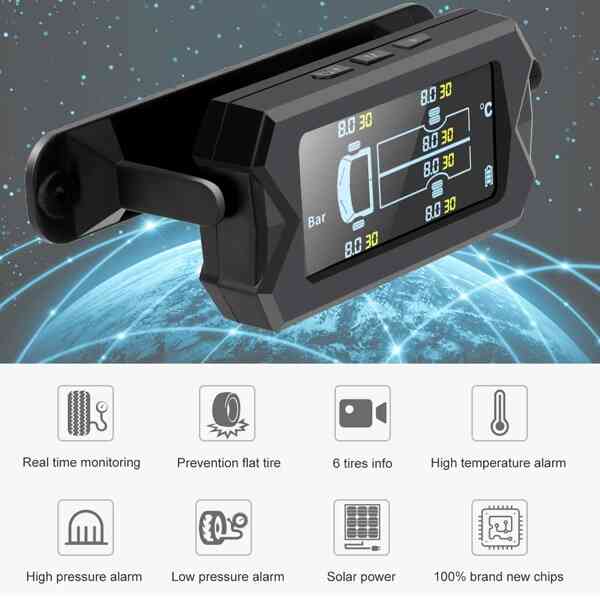

Truck tire pressure monitoring is paramount to the safe and economical operation of any trucking fleet. Proper tire pressure directly impacts fuel consumption, tire longevity, and ultimately, driver safety. In this comprehensive guide, we’ll delve into the crucial importance of consistent tire pressure monitoring for both trucking safety and operational efficiency. We’ll address common issues and outline the various ways trucking companies can effectively monitor and manage tire pressure. This article is structured to explain the core concepts, discuss the benefits, and offer actionable strategies to implement monitoring practices.
The Fundamental Importance of Accurate Tire Pressure
Understanding the Connection Between Pressure and Performance
Proper truck tire pressure is essential for optimal vehicle performance and overall safety. Inadequate tire pressure leads to several detrimental consequences, ranging from fuel inefficiency to premature tire wear and potential accidents. When tires are underinflated, they expand, leading to increased rolling resistance and a significant drop in fuel efficiency. Conversely, overinflated tires can also cause issues, such as a harsher ride, reduced traction and an increased risk of punctures or blowouts. This direct relationship between pressure and performance is undeniable and has a cascading effect on the operational costs and safety standards of a trucking company. For instance, a 5% increase in tire pressure might result in a slightly harsher ride, but could also lead to reduced wear and tear over a longer period.
The Economic Implications of Consistent Monitoring
Fuel Savings: A Key Benefit of Accurate Pressure
The effects of inconsistent tire pressure extend far beyond vehicle performance and safety. Maintaining the correct tire pressure is crucial for optimizing fuel efficiency. Studies have shown that an optimized pressure level can enhance fuel efficiency by as much as 5%. This improvement translates into significant fuel cost savings over time. For example, a fleet of 100 trucks using a slightly off-the-mark pressure of 2 PSI might incur extra fuel costs of 1000 dollars in the course of a month, demonstrating the clear economic advantages of adherence to the recommended pressure standards. Consider also the direct correlation between consistent pressure, longevity of tires, and the overall performance of the truck, which in turn positively impacts labor costs and equipment maintenance.
Safety Considerations: Minimizing Risks on the Road
Reducing the Risk of Accidents
Tire pressure monitoring extends far beyond the economic advantages, it’s deeply intertwined with driver and passenger safety. Underinflated tires lead to reduced traction and increased braking distances, drastically increasing the risk of skidding or accidents. Conversely, overinflated tires can lead to a rougher ride and a reduced ability to handle uneven roads—making accidents more likely. In fact, the National Highway Traffic Safety Administration (NHTSA) often cites underinflation as a contributing factor in numerous trucking accidents and incidents. Monitoring systems can alert drivers to deviations from the recommended pressures, enabling proactive response and averting potential issues on the road.
Effective Tire Pressure Monitoring Strategies
Implementing a Comprehensive Monitoring Program
Moving beyond awareness, it’s crucial to develop and implement a comprehensive tire pressure monitoring strategy. The best solutions are tailored to each trucking company’s specific needs. One solution is to utilize a tire pressure monitoring system (TPMS) that automatically measures pressure and alerts the driver of any deviations from the recommended specifications. Moreover, regular inspections by trained technicians provide a physical check, ensuring no issues go unnoticed. A systematic process that combines TPMS technology with routine checks creates a robust and reliable safety net.
Technological Advancements in Monitoring Systems
Leveraging Modern Technology for Precision
Modern advancements in technology have ushered in a new era of tire pressure monitoring. Sophisticated digital tire pressure monitoring systems now offer real-time data, predictive analytics, and improved accuracy compared to older methods. This level of precision is vital in optimizing efficiency and maintaining safety standards. Many fleets are integrating these systems into their existing maintenance software, facilitating seamless data management and analysis. Furthermore, advanced systems can anticipate potential problems, giving drivers and technicians the heads up to prevent accidents and ensure truck safety. For example, a system might flag a gradual decrease in pressure, potentially indicating a slow leak, allowing for timely intervention before a breakdown or puncture.
Best Practices for Tire Pressure Maintenance
Regular Inspections and Calibration
Implementing regular tire pressure checks is critical to maintaining optimal performance and safety. Drivers should be trained on the proper methods for performing these checks and should adhere to the recommended tire pressure standards. Regular inspections by certified technicians are equally important, as they can uncover hidden issues like embedded objects, irregular wear patterns, and any damage to the tire that may go unnoticed by visual inspections. This methodical process of regular tire pressure maintenance acts as a fundamental pillar for ensuring the longevity of the truck and avoiding unexpected mechanical issues.
Case Studies: Real-World Examples of Success
Real-world Impact of Tire Pressure Monitoring
Several trucking companies have reported significant improvements in fuel economy and safety by integrating comprehensive tire pressure monitoring systems. By reducing tire wear and identifying potential issues early, companies can minimize downtime and maintenance costs. One case study documented a 3% increase in fuel efficiency after implementing a tire pressure monitoring program, leading to annual savings of $25,000 for a fleet of 250 trucks. These are just some examples that demonstrate the positive impact of tire monitoring systems on real trucking companies.
Future Trends: Looking Ahead in Tire Pressure Management
AI-Driven Predictive Maintenance
The future of tire pressure monitoring may include AI-powered predictive maintenance systems. These systems could analyze real-time data from multiple sources, including tire pressure, road conditions, and vehicle performance to predict potential issues and recommend proactive maintenance actions. These systems could be a game-changer in optimizing trucking operations and enhancing safety standards.
In conclusion, diligent truck tire pressure monitoring is crucial for a multitude of reasons—safety, fuel efficiency, and even extended tire lifespan. By understanding the importance of consistent pressure levels and implementing a proactive monitoring strategy, trucking businesses can significantly reduce operational costs, enhance safety standards, and ensure overall success. Invest in the right tools and procedures for effective tire pressure monitoring and see a positive impact on your bottom line and the well-being of your drivers. Contact a reputable tire supplier for advice on the best tire pressure monitoring systems and practices tailored to your fleet’s needs.